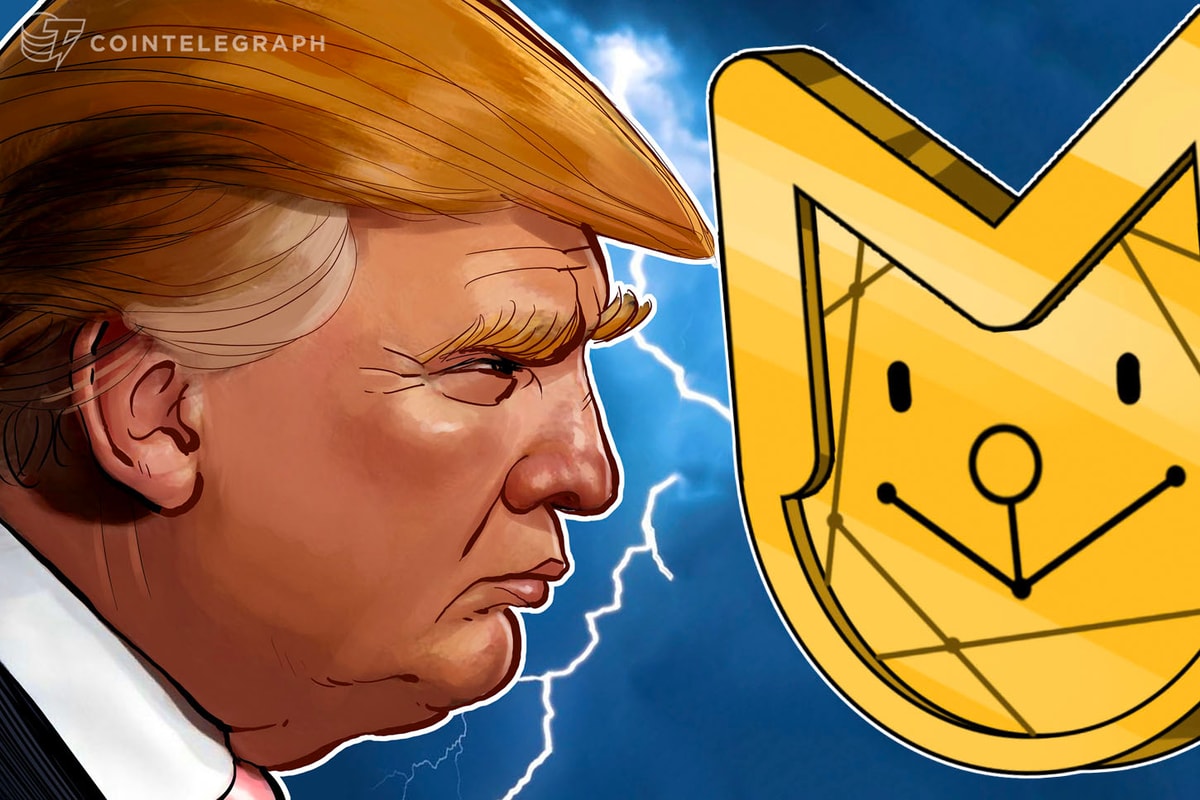Opinion by: Charles Wayn, co-founder of Galxe
Looking at the current financial market landscape, one might reference Camus, who wrote, “The realization that life is absurd cannot be an end, but only a beginning.” This sentiment applies perfectly to the realm of memecoins.
Memecoins mean business
This couldn’t be truer in light of the launch of US President Donald Trump’s official memecoin, TRUMP, which gained over a single weekend more than $12 billion in market cap, placing it 21st among all cryptocurrencies. We also have the launch of MELANIA, his wife’s memecoin, which, along with TRUMP, has broken the Solana blockchain at the time of writing. There is little doubt now that memecoins mean business. Nonetheless, memecoins are often ridiculed by the traditional financial world, which has a hard time wrapping its head around Dogecoin’s market cap, which stands at $56 billion, surpassing Volkswagen’s market cap of $48 billion. Volkswagen has been around for 86 years.
Indeed, by any traditional measure, it makes no sense that a dog-themed cryptocurrency would be more valuable than a near-century-old car maker that sells millions of cars worldwide yearly. One creates real tangible benefits, while the other seemingly provides nothing more than entertainment value.
Doge is far from the only such example. Indeed, thanks to the launch of TRUMP, the total memecoin market cap has surpassed $126 billion, outsizing countless traditional businesses and putting it just $2 billion away from the decentralized finance sector.
Financial nihilism meets accessibility
Attempting to evaluate them based on traditional financial metrics is the wrong way to look at memecoins, as countless trends hint at the emergence of memecoins as their investment category.
Recent: Official Trump memecoin captures crypto market trading volume as Bitcoin prepares for new highs
These trends include financial nihilism, which Travis Kling claims is arising among younger generations who realize that traditional routes to wealth creation and economic stability — often realized through purchasing a home — are inaccessible.
When you have nothing to lose and everything to gain, there’s no perceived considerable risk of investing in memecoins, which offer a potentially massive return without high upfront costs.
This compares to an existing crypto project model heavily skewed toward providing quick, highly profitable exits for Venture Capitalist firms instead of enabling the community backing a cryptocurrency to buy in at a fair price.
Memes provide a contrarian outlet to this dynamic and for many, they feel like a return to the community ideals the crypto industry was built on. Observing this pattern even prompted well-known crypto personality Murad to suggest we are in a memecoin “supercycle.”
Beyond these underlying forces, the appeal of memecoins is further increased through ease of access and cultural relevance. In the last year, memecoins have become more widely accessible, with numerous blockchains and ecosystems providing a user experience that matches centralized exchanges, without arduous verification.
Community matters in memes
Moreover, memecoins have also found their way into pop culture — exemplified by the overnight success of TRUMP. At the same time, even the latest season of Netflix smash Squid Games features a failed meme-coiner. And indeed, the wealthiest man in the world - Elon Musk, is an outspoken DOGE fan.
Their low unit price furthers memecoins’ appeal, as the prospect of a coin reaching $1 is a powerful psychological driver for those seeking life-changing returns.
Memes aren’t just a means to gamble with animal-themed internet coins. As Murad argues, coins like DOGE also tap into a deep-seated human desire for community and belonging. Again, nothing exemplifies this more than the success of TRUMP, where millions of people rally behind the coin in a socio-political context that appears to be a collective middle finger to the opposition.
Indeed, with the World Health Organization acknowledging loneliness as a significant global health concern, it’s perhaps not surprising that more people are seeking ways to bond online and are finding each other through memes like TRUMP. As GenZ likes to say, iykyk (if you know, you know).
From bear to blockchain
Memes are also increasingly attracting developers to build projects around them. Berachain, for example, began its life as a bear-themed memecoin and is now a blockchain ecosystem optimized for DeFi that features a new operation called Proof-of-Liquidity.
While still in testnet, Berachain provides the perfect playground for other projects to run their product experiments, including anything from new AI agents to vape-to-earn projects.
The claim that memes have no utility might be debunked once this chain launches and all these products go live on its mainnet. If nothing else, it shows that memes, which sit at the intersection of tech, community and fun, provide a perfect place to innovate.
They are also a place to make a lot of money. TRUMP, for example, added around 50% to Donald Trump’s net worth overnight, with one lucky early adopter reportedly making $20 million thanks to an early purchase.
While it’s easy to dismiss memecoins as a silly joke, those that do should remember that TradFi institutions now running billion-dollar BTC strategies once widely dismissed Bitcoin as nothing more than magic internet money.
Meanwhile, governments worldwide are implementing and considering Bitcoin as a reserve currency. Doge started as a joke patched together in one night. Now, it’s worth more than one of the biggest car manufacturers in the world, and TRUMP looks set to redefine memecoins as we know it.
Nihilism, accessibility, and community are just three trends that will drive memecoins to become a more serious investment category this year, while technical development proves they are evolving beyond entertainment. As memes evolve into community-driven products, the coins behind them will increasingly evolve from absurdities into portfolio mainstays, and TRUMP is just the beginning.
Written by Charles Wayn.
This article is for general information purposes and is not intended to be and should not be taken as legal or investment advice. The views, thoughts, and opinions expressed here are the author’s alone and do not necessarily reflect or represent the views and opinions of Cointelegraph.







